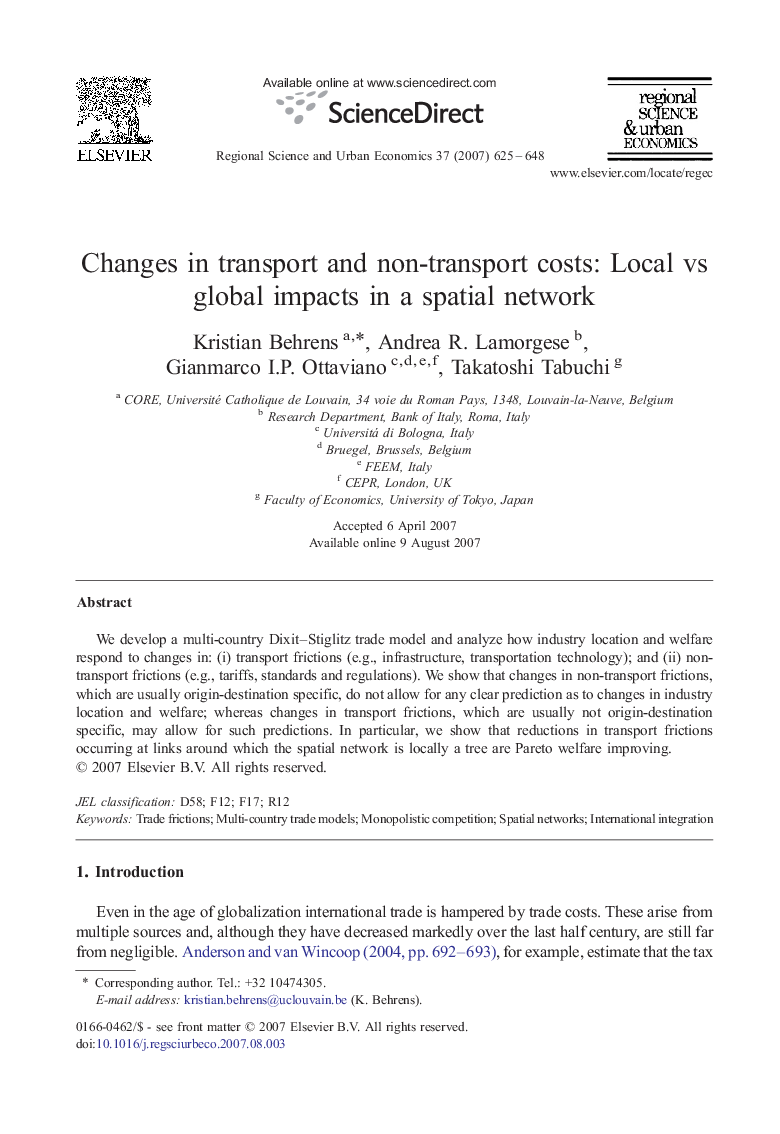| Article ID | Journal | Published Year | Pages | File Type |
|---|---|---|---|---|
| 983933 | Regional Science and Urban Economics | 2007 | 24 Pages |
Abstract
We develop a multi-country Dixit–Stiglitz trade model and analyze how industry location and welfare respond to changes in: (i) transport frictions (e.g., infrastructure, transportation technology); and (ii) non-transport frictions (e.g., tariffs, standards and regulations). We show that changes in non-transport frictions, which are usually origin-destination specific, do not allow for any clear prediction as to changes in industry location and welfare; whereas changes in transport frictions, which are usually not origin-destination specific, may allow for such predictions. In particular, we show that reductions in transport frictions occurring at links around which the spatial network is locally a tree are Pareto welfare improving.
Related Topics
Social Sciences and Humanities
Economics, Econometrics and Finance
Economics and Econometrics
Authors
Kristian Behrens, Andrea R. Lamorgese, Gianmarco I.P. Ottaviano, Takatoshi Tabuchi,
